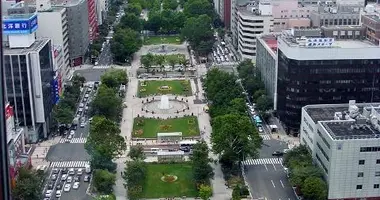Hokkaido University Botanical Gardens
- Published on : 27/12/2012
- by : Japan Experience
- Youtube
Read a guide to the Hokkaido University Botanical Gardens in Sapporo, the second oldest botanical gardens in Japan.
Hokkaido University Botanical Gardens 北海道大学植物園
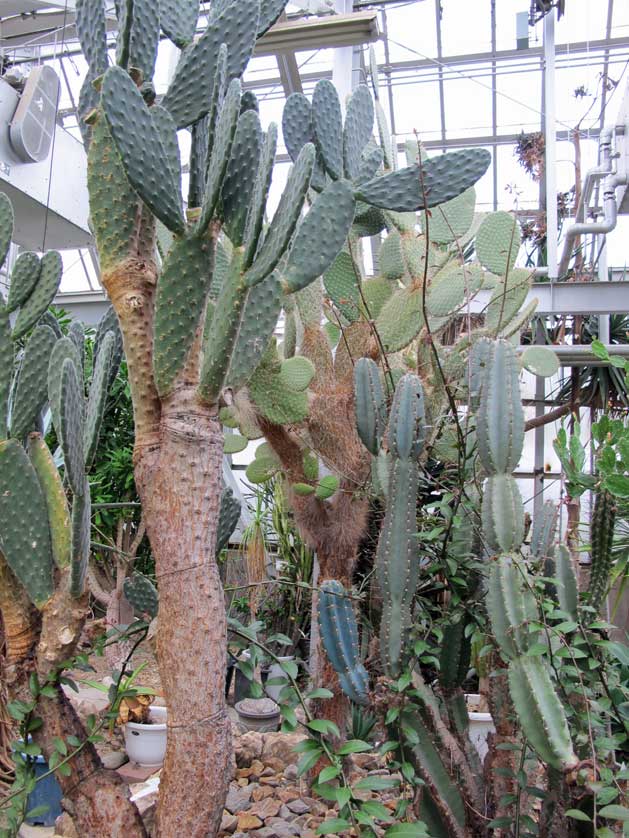
The Hokkaido University Botanical Gardens (Hokkaido Daigaku Shokubutsuen) in Sapporo, south west of Sapporo Station, are historic botanical gardens laid out at the beginning of the city's development in the early years of the Meiji Period in 1886. The 13.3 hectare site contains over 4,000 plants native to Hokkaido and can be enjoyed in spring, summer and autumn.
The early gardens were part of Sapporo Agricultural College, whose Vice-principal Dr William Clark, had recommended to the Hokkaido Colonial Department in 1877 that a garden be established for the study of botany. On the west side of the Hokkaido Government Building, the Colonial Department preserved parts of the virgin broad leaved forest and converted parts of the forest to sheep pasture. A museum was built in 1882.
Dr. Miyabe Kingo, a graduate of Sapporo Agricultural College (now Hokkaido University), was responsible for opening the botanical gardens in 1886.
The Hokkaido University Botanical Gardens are the second oldest botanical gardens in Japan after Koishikawa Botanical Garden in Tokyo.
The Hokkaido University Botanical Gardens contain a number of museums including the Northern People's Museum, close to the entrance, dedicated to the lifestyle and culture of the indigenous peoples of Hokkaido (the Ainu and Uilta) with exhibits collected from the period 1870-1930. North of here is the Miyabe Kingo Memorial Building with displays of articles belonging to Miyabe, the first director of the botanical gardens. Close by is Sapporo's oldest lilac tree, brought from New England by Clara Smith (founder of the Smith School for Girls, now Hokusei Gakuin) in around 1900. The lilac is now the chosen flower of Sapporo and the Lilac Avenue contains around 40 trees of various species brought from Europe and Asia.
The Northern Peoples Ethnobotanical Garden contains around 200 species of plants used by the indigenous peoples of North East Asia for building, clothing, food, hunting, medicine and rituals.
Other features of the Hokkaido University Botanical Gardens are a Herbaceous Plants Garden, a Rose Garden with 200 rose bushes from 20 old varieties, a Canadian Rock Garden, opened in 2001 to commemorate the partnership with the Botanical Garden of the University of British Colombia and the Alpine Plants Rock Garden with over 600 species of alpine plants typical of Hokkaido and its climate.
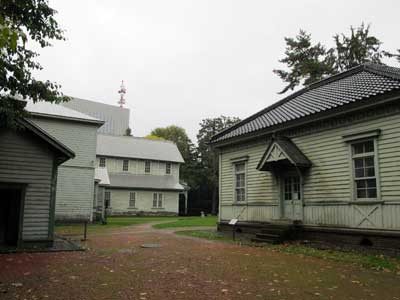 The Hokkaido University Museum and the surrounding original wooden buildings including a toilet, warehouse and office
The Hokkaido University Museum and the surrounding original wooden buildings including a toilet, warehouse and office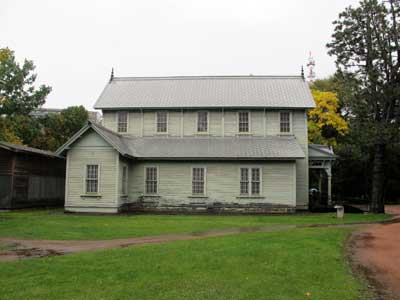 The Western-style Botanic Garden Hokkaido University Museum, Sapporo, Hokkaido
The Western-style Botanic Garden Hokkaido University Museum, Sapporo, Hokkaido Hokkaido University Botanical Gardens wetland area, Sapporo, Hokkaido
Hokkaido University Botanical Gardens wetland area, Sapporo, Hokkaido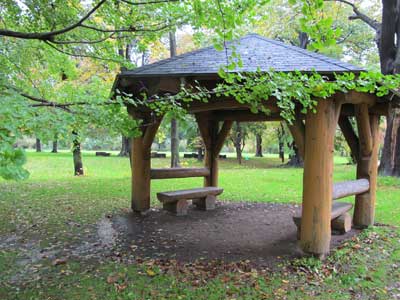
The Hokkaido University Botanical Gardens are an oasis of green within the city of Sapporo
The Hokkaido University Museum of the Hokkaido University Botanical Gardens is Hokkaido's oldest museum dating from 1882. The wooden building and original glass display cases are both National Treasures and house a number of stuffed animals including the only existing specimens of the Ezo wolf, a number of bear specimens and a rare Blakiston's Fish Owl. The nearby original wooden toilet, warehouse and museum office are also designated as National Treasures of historical importance.
Finally a favorite of the gardens are the Greenhouses, which remain open during the long Hokkaido winter and are a good place to escape the winter chill and experience the microclimate of a tropical rain forest for a few minutes along with an orchid house and a temperate zone.
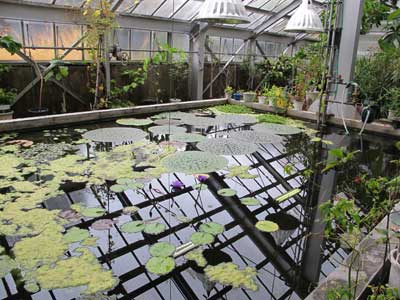 The Glasshouses at the Botanic Garden of Hokkaido University, Sapporo, Hokkaido
The Glasshouses at the Botanic Garden of Hokkaido University, Sapporo, Hokkaido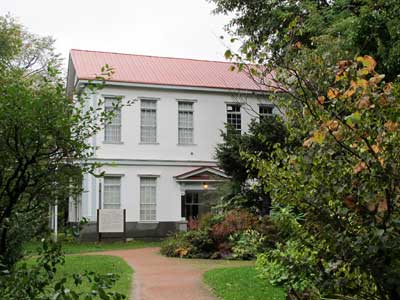 Miyabe Kingo Memorial House at the Botanic Garden of Hokkaido University, Sapporo, Hokkaido
Miyabe Kingo Memorial House at the Botanic Garden of Hokkaido University, Sapporo, Hokkaido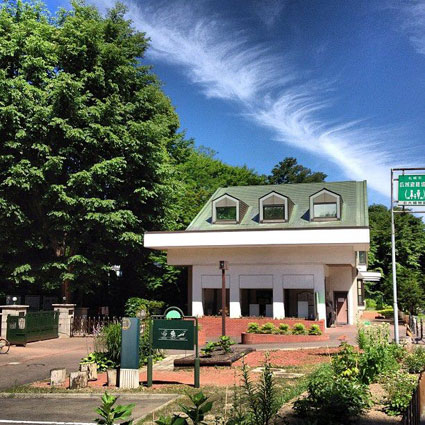 Entrance to the Botanic Garden of Hokkaido University, Sapporo, Hokkaido
Entrance to the Botanic Garden of Hokkaido University, Sapporo, Hokkaido
Access - Botanic Garden of Hokkaido University
The Botanic Garden of Hokkaido University is a short walk from JR Sapporo Station, Exit #4 of the Nishi jiutchome Station on the Tozai Line or Odori Station on the Toho, Tozai and Namboku lines of the Sapporo subway.
North 3, West 8, Chuo-ku, Sapporo, 060-0003
Open: 9 am-4 pm from April 29-Sept 30; 9 am-3.30 pm from October 1-November 3; only greenhouses open November 4-April 28; closed Mondays
Tel: 011 221 0066
Other Sapporo Attractions
Old Hokkaido Government Building (akarenga)
Sapporo Beer Museum
Sapporo Clock Tower

